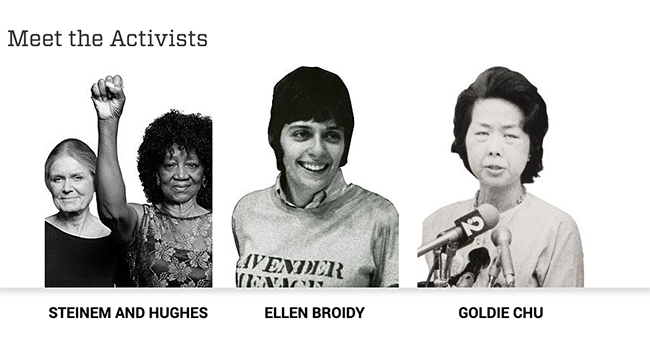Five Ideas for Turning an MCNY Lesson Plan into a Remote Learning Tool
Wednesday, April 29, 2020 by
The Museum of the City of New York’s Frederick A.O. Schwarz Education team has been hard at work brainstorming how we can best serve teachers and students during the move to remote learning. This is the first in a series of Education posts on the MCNY Stories page highlighting how the Museum’s resources—from digital collections, to lesson plans, to professional development opportunities—can help teachers and students navigate the waters of online learning during the COVID-19 pandemic.
"Anyone else feeling a bit overwhelmed with all of the resources shared?” a teacher asked the Twittersphere in March, reflecting the mood of many educators as learning moved online in the midst of the COVID-19 pandemic. [1] We at the Museum of the City of New York understand the pitfalls of digital overload. That’s why we’re keeping NYC educators in mind, sharing practical tips on how to use our resources to supplement your curriculum and instruction as the school year comes to a close. We also want to hear from you! What do you need as an educator right now? How can the Museum help? Let us know by sending your questions, suggestions, and feedback to pd@mcny.org.
In this first post, we offer five ideas for how you can use MCNY’s lesson plans as a jumping-off point to promote inquiry-based, student-driven, and primary source-rich learning—from home. Grounded in the history of New York City, these lessons also highlight the resilience and diversity of our city and its inhabitants, themes that we find particularly inspiring in this difficult moment.
In addition to a brief content overview with learning goals, most of our lesson plans contain:
- Vocabulary
- A list of key figures and/or organizations
- Primary sources with document-based questions
- A suggested activity
- Additional readings
- Contemporary connections
How can these lessons work when “school” looks so different?
1. Break the lesson into a week-long, self-guided exploration (middle and high school).
We suggest drawing from a lesson plan’s parts to allow students to guide much of their own learning during the week. As students work through daily tasks, the teacher can check in with students one-on-one or in small groups to provide more personal feedback and support. Self-guided learning is also a great way to differentiate: you can modify readings for various learners, add additional tasks for accelerated students, give students choice in selecting topics, and provide targeted supports along the way. Breaking the lesson into small pieces also allows instructors to add enriching content to pre-existing curriculum and textbook materials.
- Monday—Introduce the topic through suggested readings and/or videos: Provide students with the overview text form the lesson plan and have them read one or two of the additional readings (many can be found online; adjust according to grade and reading level). If you are holding video sessions with the whole class, use this first day’s readings and audiovisual materials, if available, to introduce the project, start a discussion, and spark interest in the topic.
- Tuesday—Vocabulary Building: Students should use the internet to find definitions of each of the vocabulary words listed in the lesson plan. Then ask students to either draw an image or find one online that captures the spirit of the definition. Encourage them to be creative – this will help with retention and engagement. PowerPoint and Google slides are particularly helpful for creating vocab slideshows that can be saved and shared, though pen and paper works just fine, too.
- Wednesday and Thursday—Primary Source Exploration Days: Each lesson is full of primary source material from our collections and exhibitions, from photographs and flyers to quotations and objects. Use the document-based questions to guide students through the process of analyzing these sources. We recommend modeling this with students during a whole-class video session, then students should be able to complete the questions on their own. You can also “jigsaw” the primary sources, or have each student select two to three that interest them the most.
- Friday—Summative Activity: Draw on the lesson plan’s activity idea and require students to share their final products in a shared folder. You may also want to ask students to write 1-2 paragraphs explaining how the sources they analyzed help answer the unit’s essential question or week’s learning goal.
2. Draw on selected “key figures” and/or organizations for a place-based biographical research project. (All grades)
Learning about Civil Rights? Your students may know Martin Luther King Jr. and Rosa Parks, but what about Ella Baker, Mae Mallory, and Milton Galamison, individuals who fought for racial justice in New York’s five boroughs? Diving into the ‘60s counterculture? Activist New York lesson plans are full of both famous and everyday New Yorkers who fought for what they believed in during that turbulent decade – as well as throughout the 400 year history of the city.
Each of our lesson plans provides a list of New Yorkers who would make excellent subjects for biographical research projects. We suggest giving students a list of individuals related to a topic under study and allowing them to choose who they want to research. This is also a great way to teach digital literacy and online research skills by giving them tips on how to compare sources and find credible information online about their chosen figures.
3. Modify the closing activity and give students some non-screen time. (All grades)
Tired of looking at your screen? Your students probably are, too. Draw on the activity ideas presented in our lesson plans to move students off their devices and into a space of creativity and creation. Our lesson plans offer activity ideas such as making a protest sign after learning about the environmental justice movement of the 1970s, or creating a mural to reflect the value of intersectionality in the women’s liberation movement. You can even involve the whole family by encouraging students to think about accessibility in the city on their next socially-distanced walk.
4. Take an essential question and let students loose in the Activist New York online exhibition. Then draw on our lesson plans to dig deeper. (Middle and high school)
New York City public school teachers are nearing the end of their scope and sequence. That means approaching such fascinating essential questions as, “Has the United States of America lived up to the promise and potential of its history and status?” (8th Grade Social Studies), “Is there one America or many?” (11th Grade US History), and “How do citizens influence government policy?” (12th Grade Government).
MCNY’s Activist New York online exhibition offers fascinating material to explore these and many other questions and content standards NYC teachers will be engaging as the school year comes to a close. We suggest allowing students to explore the online gallery, then choose one or a few Activist New York lesson plans to find primary sources and additional readings that allow them to dig deeper and ground national or global topics in local experience.
5. Use your phone to reach students with limited internet or computer access. (All grades)
We know not all students have the same access to stable internet, a personal laptop, or the technology they need to make online learning successful. Free chat applications like Whatsapp and Telegram are great ways to reach students who may be struggling with access to adequate technology. Take a screenshot of primary sources and send them via these channels along with sets of questions and off-line activity ideas they can do on paper. (Be sure to include the citations for images – including the subject, date, and copyright owner of the image, as well as the author, artist, or photographer if known - so students learn best practices for sharing and interpreting images.) Students can also take photos of their work and send it back. Know a student in New York struggling with access to technology? Encourage families to fill out this NYC DOE Request form.
[1] Sarah Schwartz, "Flood of Online Learning Resources Overwhelms Teachers," Education Week, March 25, 2020






